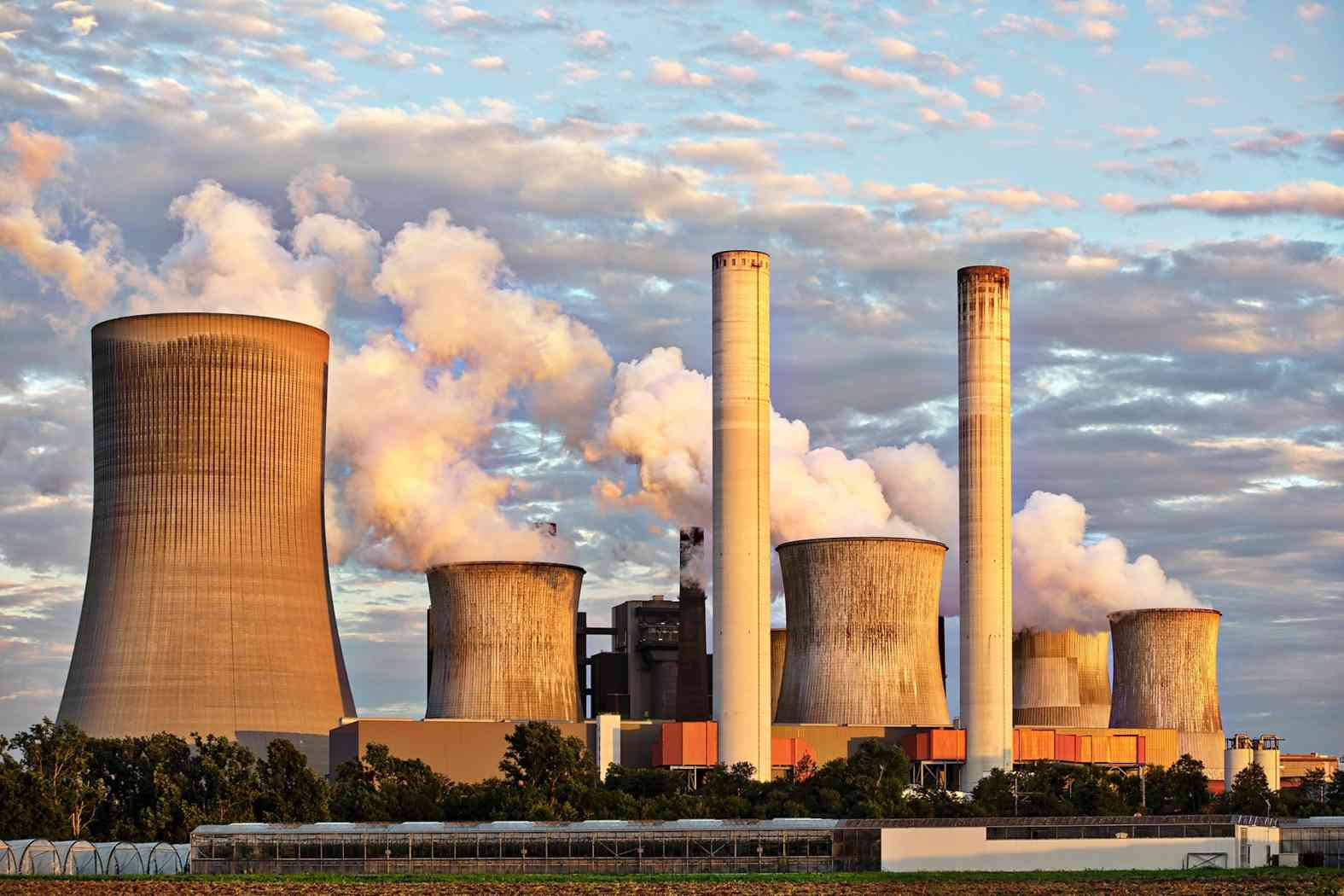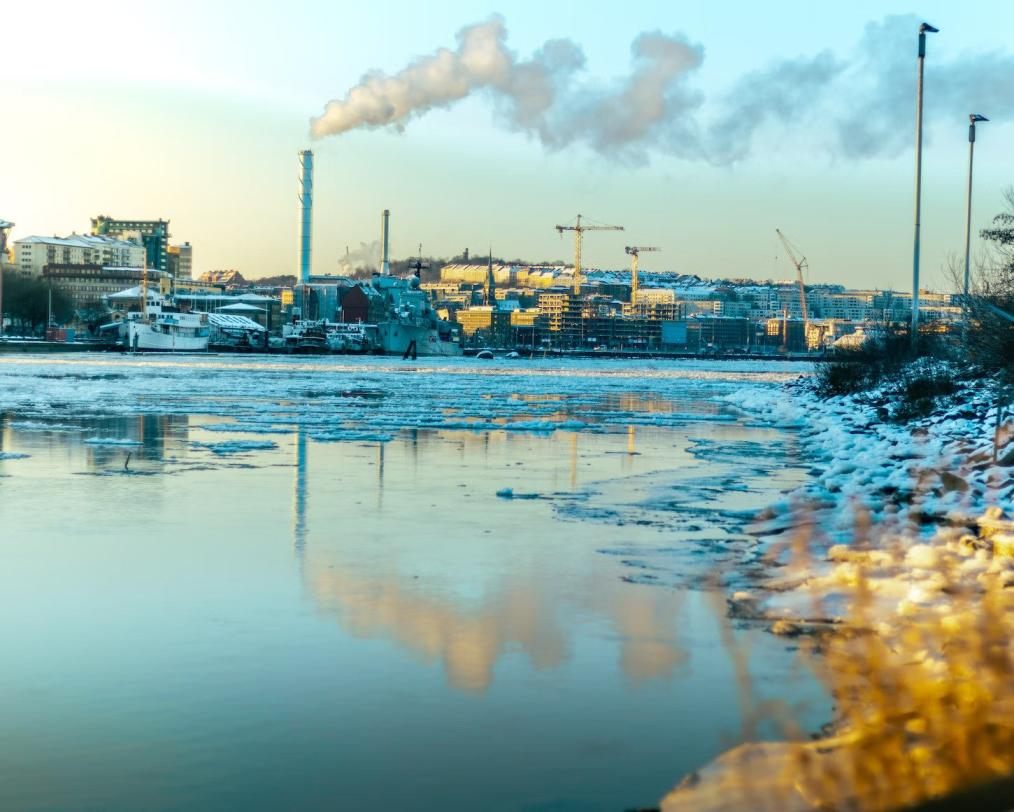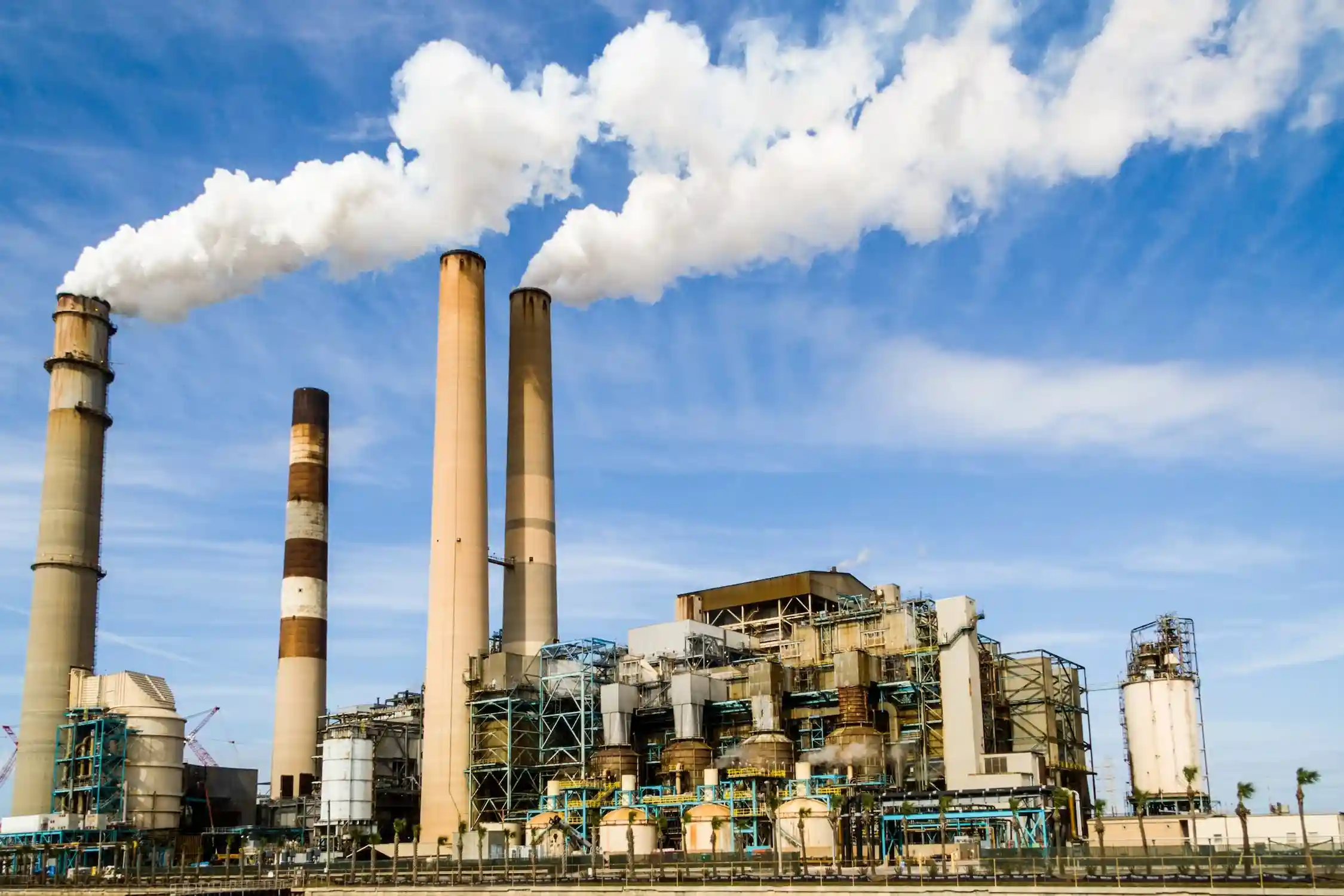The Outbreak of Thermal Pollution

Thermal pollution is water contamination that occurs when heated water enters natural bodies of water.
Thermal or nuclear power plants contribute the most to pollution, which damages water ecosystems and threatens specific animal species.
Moreover, it disrupts the equilibrium in the food chain, distorting the overall balance of species.
These power plants produce an excessive amount of harmful chemicals and induce dangerous processes, such as the following:
1.1 Industrial effluents
This includes any liquid that comes as thermal discharge and can potentially harm water. It may include petroleum refineries, pulp and paper mills, chemical plants, steel mills, and smelters.
1.2 Sewage Effluents
Certain industrial plants produce large amounts of domestic sewage effluent, which contains lavatory waste and dirty water used to wash clothes or dishes and to cook meals.
1.3 Biochemical Movement
Day-to-day operations in industrial plants can induce this process. It denotes a chemical process in living things, specifically involving biomolecules.
To elaborate, the surrounding water temperature is the fundamental factor that allows aquatic fauna and certain vegetation, such as flora, to exist, grow, and survive. Due to the damaging effects of thermal pollution, dissolved oxygen levels in the water decline significantly.
As we all know, many aquatic species rely on this oxygen for survival. However, it can also threaten fish larvae and eggs and kill certain fish species with a very limited tolerance for abrupt changes in water temperature.
Moreover, thermal pollution can induce aquatic organisms to migrate from their natural habitats to survive and be safe.
Globally, the top three countries with the most elevated combined rates of thermal emissions are the United States, China, and France.
In the United States alone, seventy-five (75) to eighty (80) percent of thermal pollution comes from industrial power plants. The remaining twenty (20) to twenty-five (25) percent comes from industrial sources, such as those mentioned above.
Due to the constant degradation of water quality, all living things—humans and animals alike—and the environment are in danger. Worse, thermal pollution is largely the result of human activities. When warm water is mixed into the ocean, it alters its physical properties.
Consequently, it interrupts the natural processes of the ecosystem, produces stress in natural systems, triggers the emergence of certain diseases and illnesses, and ultimately, it can be lethal, too, causing the death of thousands of vulnerable and affected living organisms.
Gear up! Let's explore the nature of thermal pollution, its origins, and who is responsible for it. While we're at it, we should also discuss its effects on human life and the environment in detail.
Finally, given the gravity of thermal pollution, what can we do to lessen its effects and remedy it for good?
The 3 Main Causes of Thermal Pollution

Natural events such as wildfires, volcanic eruptions, and submarine hydrothermal vents may cause thermal pollution.
However, thermal pollution most often results from industrial processes that discharge large volumes of heated wastewater into a body of water.
-
Power Plants and Industrial Facilities
Thermoelectric power plants involve producing heat, which is then converted into water that runs through a long series of pipes in the boiler to produce steam. This is one cause of thermal pollution. These power plants use coal, natural gas, nuclear power, or biomass to operate.
In addition, it can also use other waste products for its day-to-day operations. Generally, power plants are constructed and situated near a body of water—such as a river, lake, or ocean—to get a nearby, instant, and steady water supply.
As such, it condenses and transforms into steam, which, in turn, powers turbines to generate electrical power. In another aspect, water is also utilized in cool-inducing machinery, which, ironically, gets very hot, causing it to release excess heat into the water.
To continue, the water absorbs heat while the excess from the evaporation process is returned to the source.
On the other hand, several industrial facilities greatly contribute to the growing effects of thermal pollution. These facilities use harmful chemicals, such as those found in paper mills, chemical plants, and steel mills, which can damage water quality.
Furthermore, these industrial facilities also use water to cool machinery and discharge it at high temperatures.
Pumping water from large natural bodies of water, such as lakes, oceans, or rivers, for industrial—related operations is dangerous. After water is used for certain industrial purposes, it is discharged into the ocean at high temperatures.
As a result, it adversely affects the aquatic ecosystem and marine environments. In a specific instance, once cooling is complete, marine animals, such as fish and larvae, become trapped in intake screens and die. Moreover, aquatic habitats are experiencing negative changes due to constant discharge and exposure to heated and polluted wastewater. -
Desalination Plants
Like power plants and industrial facilities, desalination plants use once-through cooling. Over half of the seawater used in the desalination process is discharged back into the body of water as high-temperature wastewater.
Worse, in some countries, incineration plants are built close together, resulting in large volumes of heated, polluted wastewater in shallow coastal areas.
As a result, seawater temperature may rise, and its salinity may increase considerably. -
Wastewater, Erosion, and Deforestation
One important thing to note is that not all wastewater is treated before being discharged into a natural body of water.
As such, untreated domestic sewage, city stormwater, and agricultural waste can cause thermal contamination in water sources within reach.
So, why is that so? You might ask. This is because runoff waters and discharges are, more often than not, warmer than the streams, lakes, or oceans they flow into.
Moreover, human use of land can cause specific changes that may also lead to thermal pollution. One specific human-induced cause of thermal pollution is deforestation.
As humans harvest timber or, if not, clear land for crop planting and livestock raising, erosion becomes the climax that awaits at the end. It can also cause rivers and streams to have much wider, shallower stream beds, which is not good because it is prone to warming.
In addition, clearing operations of trees and certain types of vegetation near lakeshores and riverbanks increase (primarily excessive) exposure to the sun, which in turn triggers water warming.
The Seven Major Effects of Thermal Pollution

-
Decreased Amount of Dissolved Oxygen Levels
As previously stated, warm water contains much less oxygen than cold water. When oxygen levels drop, animals that fail to migrate to safety will die.
In deeper bodies of water, the infusion of warmer water can keep oxygen from scattering into deeper layers, which may be good for microscopic organisms. However, it can be seriously lethal for other aquatic animals.
As such, dissolved oxygen can promote the growth of algae, which, in turn, can place some aquatic plants and animals in a very dangerous condition. The algae bloom problem is one of the most negative side effects of thermal pollution due to the proliferation of dissolved oxygen. -
Migration of Living Things
Fish and other aquatic creatures may "migrate" due to elevated water temperatures.
Essentially, they will leave their home and find a much safer place. This animal migration is very dangerous because it disrupts the ecosystem for the animals left behind.
Besides aquatic animals, birds may also need to migrate if thermal pollution has finally caused a severe scarcity of their food supply. This means birds will migrate as far as they can to look for areas with more food.
Consequently, some plants and animals will remain in the area. However, due to the effects of migration, these organisms will suffer huge ecosystem losses.
Due to the high risk of thermal pollution, animals will have no choice but to migrate elsewhere to survive. This will dramatically affect the biodiversity that existed before water pollution. -
Increased Toxins in the Water
One damaging side effect of dumping wastewater is the toxins it contains. The accumulation of toxins in water can directly affect the emergence of thermal pollution in the area. Another is chemical pollution, which is an unpredictable side effect of using water for cooling.
Consequently, harmful chemicals such as solvents, fuel oil, and heavy metals are dumped into lakes, rivers, and other bodies of water.
Likewise, a nuclear power plant is also known to produce radioactive cooling water. In retrospect, all these pose toxic effects on plants and animals, resulting in poisoning, mutations, and pasteurization. -
Loss of Biodiversity
When bodies of water that used to be cool suddenly become warm, many organisms with specific vulnerabilities will be driven away or, worse, die. If this happens repeatedly, it threatens animals and endangers certain animal species.
The heated water can also disrupt the daily activities of animals beneath the water surface, such as reproduction and egg-laying. To some, animals may be nothing but simple subjects of casualties of human-induced water pollution —but seriously, can’t we do any better?
In addition, multicellular aquatic plants are put in a dangerous position when the brink of thermal pollution looms at the tip of the aquatic ecosystem. -
Negative Ecological Impacts
To reiterate, the entire aquatic ecosystem is vulnerable to thermal pollution. This effect can vary widely, especially when large amounts of heated water are dumped into large bodies of chilly water.
A phenomenon known as thermal shock may kill insects, fish, and other amphibians. The deaths of these animals provoke more issues with biodiversity in the ecosystem. For one, animals will no longer have adequate food sources.
Next, species extinction may occur when most aquatic organisms' local population migrates. Lastly, coral reef bleaching may occur when power plants or industrial factories recklessly and irresponsibly dump wastewater into the ocean. Simply put, coral bleaching occurs when the coral organisms that maintain the coral reefs die, possibly due to thermal pollution. -
Reproductive Effects Of Thermal Pollution
A sudden, substantial rise in water temperature can cause various reproductive problems in aquatic animals. Heated water reduces certain organisms' fertility rate and capacity underneath the surface.
To some, it may even cause serious birth defects or result in the laying of deformed eggs. So, why is that so, you may ask? This is because warmer water tends to trigger certain chemical changes in the bodies of aquatic animals. Needless to say, defective eggs and other types of birth defects decrease the overall reproductivity rate of the aquatic population.
In line with this, thermal pollution is dangerous because it can alter the biological composition of aquatic organisms. -
Increased Metabolic Rate Thermal Pollution
Warm water is not necessarily harmful to every aquatic organism. For example, it may generate positive effects on cold-blooded fish and amphibians. However, it is only for a very limited amount of time.
Even so, most animals in the vast ocean do not tolerate water at higher temperatures. Animals that adapt better to warmer water can disrupt the equilibrium of their surroundings.
As such, they may take advantage of the situation and outcompete other aquatic animals by eating them alive, exhausting their food sources, or leaving them to starve.
Another effect of warm temperatures is that they can speed up the metabolic rates of aquatic creatures. If you think it is a good thing, let me tell you it’s not, because a fast metabolism means animals will need more food, leading to scarcity in the local ecosystem.
The Resolution, Mitigation, and Undertakings for Thermal Pollution

Finally, as we reach the end, what are the resolutions, mitigation measures, and undertakings we can employ to lessen the effects of thermal pollution? In the United States, thermal pollution is properly regulated by the Clean Water Act.
The law mandates that states establish specific standards and limits for thermal discharges that power plants and other industrial facilities must follow. Failure to comply will result in the loss of their operating permits.
Moreover, new and emerging technological advances can mitigate thermal pollution. These include machinery that can reduce the levels of water discharged by power plants and other industrial sources into natural bodies of water and instead use the water for other purposes or processes.
One example is using heated wastewater for desalination to reduce the risk of thermal pollution.
In addition, individuals can take steps to reduce—and not worsen—thermal pollution, such as conserving energy and planting trees along shorelines.
Moreover, we can use alternative energy sources like solar or hydropower. We can also reuse and recycle water when possible. The bottom line is that we can take precautionary measures to eliminate the risk of thermal pollution.
Ultimately, thermal pollution raises environmental concerns. Its impacts on human life, animals, and the surroundings can be extensive, ranging from climate change and food scarcity to the deaths of some living things.
As such, it disrupts the existing biodiversity and destroys certain ecological processes crucial to life.
← Older Post Newer Post →
